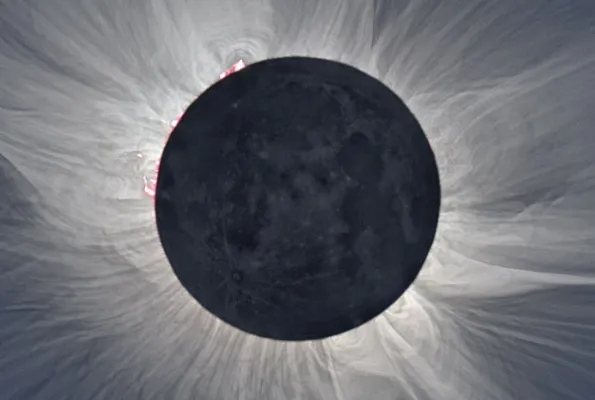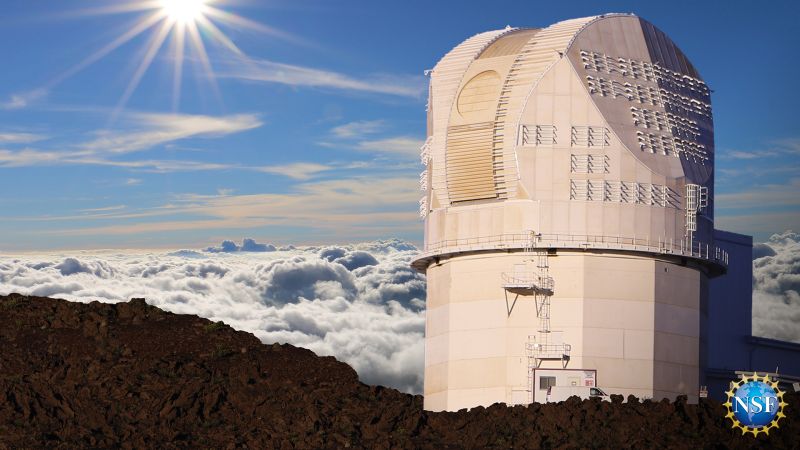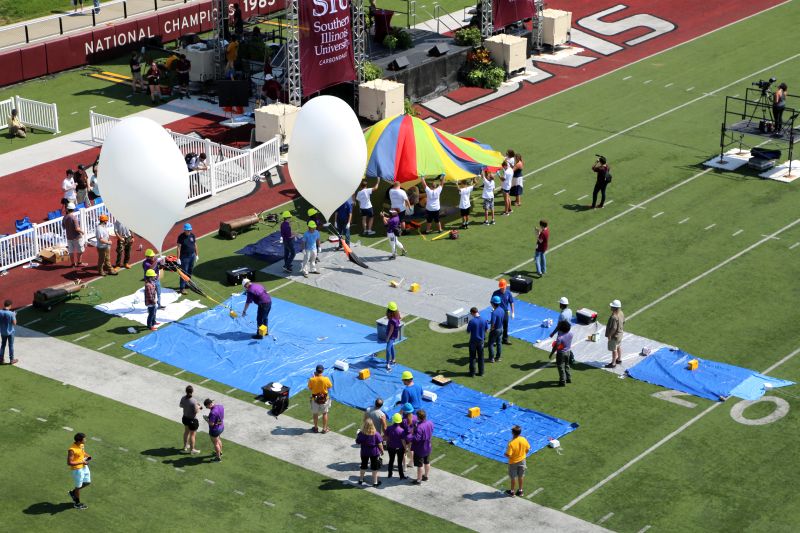
Exploring the science of the sun during the eclipse
NSF helping scientists take advantage of unique research opportunity
The April 8 solar eclipse provides opportunities for science, education and outreach that multiple U.S. National Science Foundation programs will support.
The total solar eclipse will be visible from Texas to Maine, with a partial solar eclipse viewable over most of the continental United States.
"A solar eclipse is an amazing time to study the sun because we are positioned perfectly, and the moon is positioned perfectly to block out the very bright disc of the sun so that you can see the corona, which is the solar atmosphere," said Carrie Black, a program officer in the NSF Astronomical Sciences Division, who oversees operations of the NSF National Solar Observatory (NSF NSO) and the NSF Daniel K. Inouye Solar Telescope. "It's very diffuse, and the moon is positioned perfectly just to block out the disc and nothing else, allowing us to see very, very low in the corona."
Scientific advances enabled by eclipse observations include a better understanding of the solar corona and greater insight into how the magnetosphere, ionosphere and atmosphere respond to changes in solar flux. The event also provides an opportunity for ground-based observations of the solar corona to test new diagnostics using light from the world's most technologically advanced solar optical system.
NSF Daniel K. Inouye Solar Telescope
NSF NSO is a federally funded research and development center that focuses on the physics of the sun using a network of ground-based telescopes around the globe.
The newest facility, the NSF Daniel K. Inouye Solar Telescope, will provide an even greater understanding of the sun. It is the world's largest, most powerful solar telescope. It has a 4-meter diameter mirror, more than twice the size of the next largest solar telescope, and is located on the summit of Haleakala on the island of Maui, 10,000 feet above sea level.
"One of the reasons why the Inouye Telescope has been built is to understand better what's happening in the sun atmosphere in terms of the structure of magnetic fields," said Maria Kazachenko, a researcher with NSO. Measuring these magnetic fields is difficult because of the "noise" from the sun's atmosphere.
"The solar atmosphere is extremely dim. It's hard to observe, and it's only during the eclipse that we could see the solar atmosphere, called the corona, and then also the chromosphere, which is a little bit lower down," Kazachenko said. "Now, we have these wonderful tools. We have telescopes on the ground and in space to learn about both corona and the chromosphere."
Another NSO facility that will take advantage of the eclipse is the Mauna Loa Solar Observatory, which is located more than 11,000 feet above sea level on the Mauna Loa volcano on the island of Hawaii. The observatory is operated under an agreement with the National Oceanic and Atmospheric Association and is also part of the Global Oscillation Network Group (GONG), six telescopes located around the globe that have monitored solar activity continuously since the 1990s. GONG collects daily measurements of activity on the surface of the sun across different wavelengths of the magnetic spectrum. The near-real-time maps of the sun's magnetic field are used to predict solar wind conditions and coronal mass ejections that may affect Earth.
Researchers will also use the NSF Super Dual Auroral Radar Network, a collection of radars located worldwide that monitors space weather conditions in the upper layers of Earth's atmosphere. During the eclipse, a project funded by NSF and NASA will study the impact of solar radiation on the upper layers of Earth's atmosphere. A team led by Virginia Polytechnic Institute and State University will use three of the radars to bounce radio waves off the ionosphere during the eclipse. The data reveals changes in the ionosphere's density, temperature and location. The research team will compare the measurements to predictions from computer models to answer questions about how the ionosphere reacts to a solar eclipse.
Unique ways to study the sun
NSF is also supporting many other efforts to study the sun that are using the unique opportunity of the eclipse to collect data.
During the eclipse, NSF-funded researchers plan to collect high-altitude observations of the infrared radiation streaming out of the solar corona using the NSF National Center for Atmospheric Research (NSF NCAR) Gulfstream V research aircraft, which will fly along the path of totality carrying the Airborne Coronal Emissions Surveyor.
The Nationwide Eclipse Ballooning Project will see teams of students and researchers across the country launch a mix of weather and stratospheric balloons to document how the atmosphere changes and reacts to the passing total solar eclipse.
The project, sponsored by NSF and NASA, supports 53 teams divided into nine pods. At sites along the eclipse path, student teams in the engineering track will use large balloon systems to livestream video, observe atmospheric phenomena and conduct individually designed experiments. Student participants work with atmospheric science experts throughout the project and will publish results in peer-reviewed journals.
SPARC is a towable trailer designed to support research with state-of-the-art atmospheric instrumentation. Since 2014, the mobile lab has traveled thousands of kilometers across the U.S. to collect atmospheric data for more than seven field campaigns. In 2022, it became part of the NSF Community Instrument Facilities, which allows university researchers and partners to submit proposals to utilize the SPARC's capabilities for field campaigns.
For the eclipse, the Space Science and Engineering Center is partnering with Valparaiso University for a project to educate undergraduate students about Earth's planetary boundary layer. SPARC instrumentation includes sensors to measure temperature and water vapor in the lower troposphere and provide detailed profiles of cloud and aerosol properties. Combined with a Doppler lidar, which uses laser light to detect objects and provides vertical wind profiles and meteorological observations, these instruments capture the evolution of the planetary boundary layer as well as the properties of the entire atmosphere.
To learn more about why we study the sun as well as the impact "space weather" - solar flares, sunspots and magnetic storms - can have on our technological systems and the activities of modern civilization, listen to this interview with Dr. Carrie Black, an NSF program director who oversees the National Solar Observatory, the Inouye Solar Telescope and the solar astrophysics grants portfolio.






